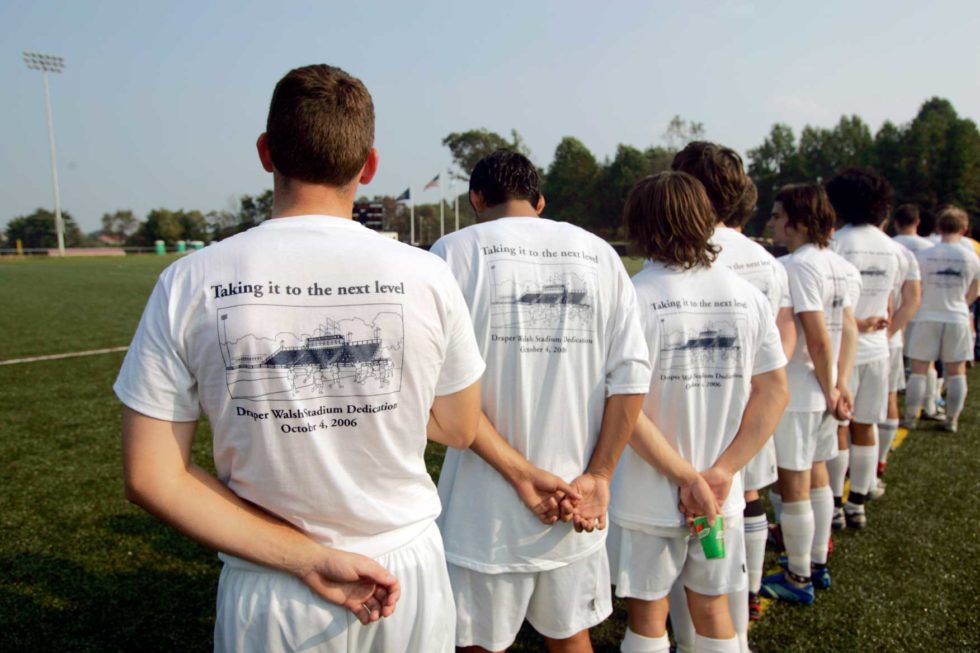
Immaculata Early Athletic Success & Growth
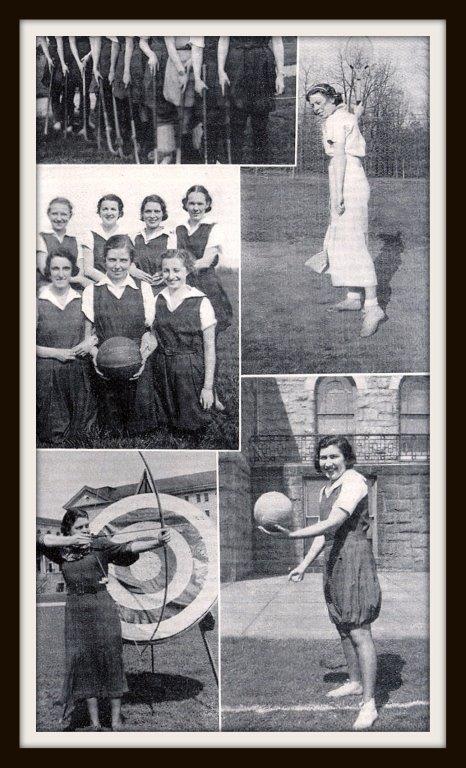
Early Sports Teams
Immaculata experienced its initial taste of athletic victory in 1946 when an unwavering group of early Macs defeated the Temple Women’s Basketball team to win the Mythical City Championship of Philadelphia. This Immaculata team definitely felt on top of the world. Little did they know, that this athletic feat would be a harbinger of dominance that Immaculata women’s basketball would soon come to find.
Immaculata’s early athletic reign began in 1972. The unexpected longshots from the East Coast played themselves into national recognition as they took down college and university teams from all across the United States. In doing so, they took home the title in the first Association for Intercollegiate Athletics for Women (AIAW) National Intercollegiate Basketball Tournament, the equivalent of the NCAA tournament of today. With an original team of 11 women, they shocked the world in that first year, and would do the same for many more years to come.
Nicknamed the “Mighty” Macs by a local sportswriter, the team would go on to win two more consecutive AIAW national basketball titles in 1973 and 74 under the direction of Coach Cathy Rush. The Mighty Macs eventually competed in five consecutive national championships winning the first three titles, earning runner-up in 1975 and 1976 and 4th-place in 1977. Cathy Rush was inducted into the Naismith Memorial Basketball Hall of Fame in 2008, and in 2014 the three Mighty Mac teams were also inducted into the Hall of Fame.
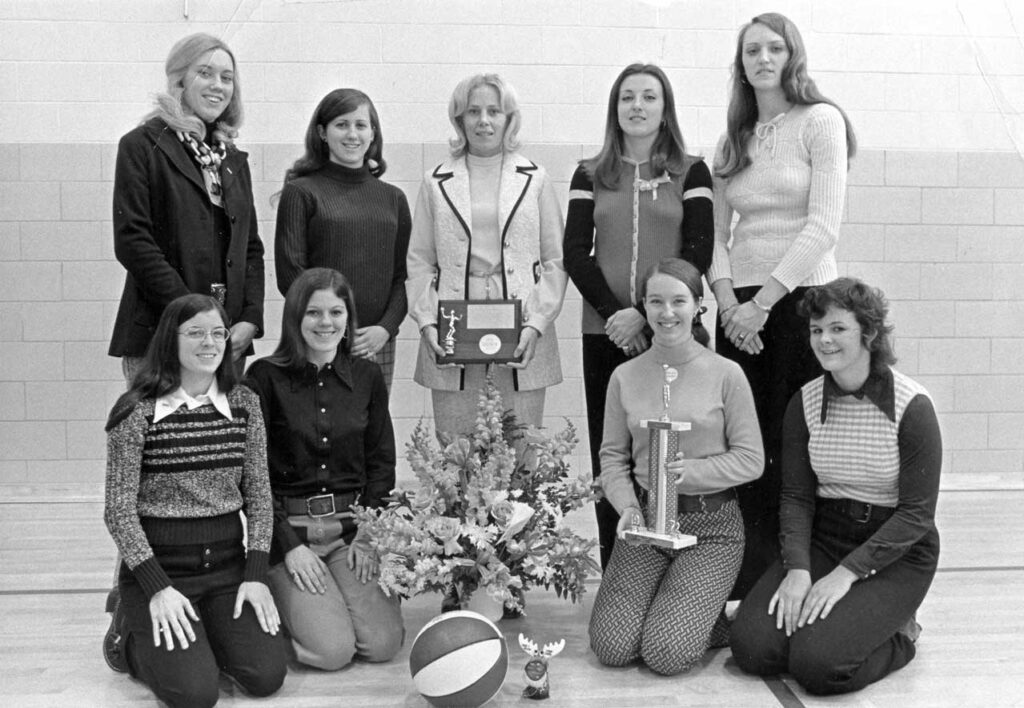
Along with the major feats of winning city and national championships, growth within Immaculata athletics happened progressively. In the late ’90s and early 2000s, new varsity sports were added to the roster of women’s sports including teams for cross country, soccer, lacrosse and track & field. These sports were being added to the already existing sports of field hockey, volleyball, tennis, basketball, and softball.
The university reached its current list of athletic offerings in 2018 with the addition of men’s and women’s swimming and women’s golf teams. Immaculata today offers a total of 24 different Division III athletic teams between men’s and women’s sports.
Wait, when did all the men get here?
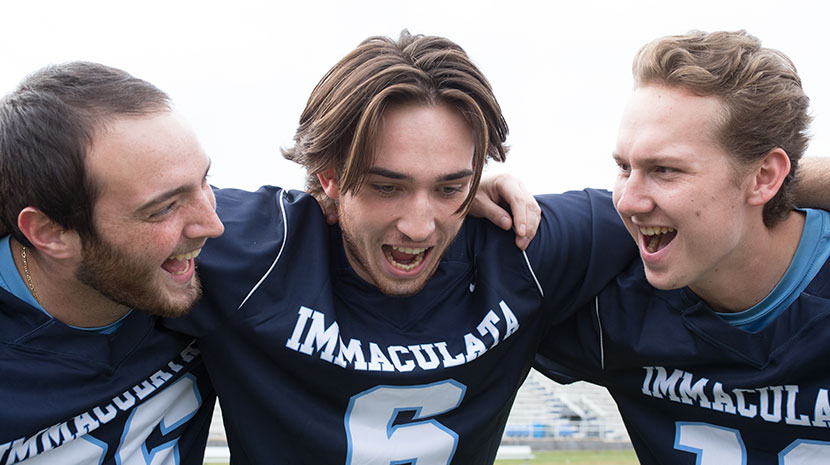 When the decision was made in 2003 to accept males into the traditional undergraduate college, it brought great change throughout the University. Enrolling this new group of students also meant new strategies to attract and keep the men, including the addition of athletic teams.
When the decision was made in 2003 to accept males into the traditional undergraduate college, it brought great change throughout the University. Enrolling this new group of students also meant new strategies to attract and keep the men, including the addition of athletic teams.
Slowly but surely, the recruiting of men’s sports began to take place in 2005/2006, starting with men’s basketball and men’s soccer. Coaches at the time, Jamie Chadwin (men’s basketball) and Seamus O’Connor (men’s soccer), started their efforts by visiting regional high schools to gauge local prospects.
Men’s sports that were slated to begin in the 2005-06 year included basketball, soccer, golf, and tennis. In the fall of 2007, cross country was offered to men at the university and in the spring of 2007, a new athletic era began when the first men’s lacrosse team took the field, becoming the sixth male sport to be offered at Immaculata.
Once again, in the spring of 2008, the men of Immaculata were offered additional opportunities to participate in baseball and track & field. These offerings expanded the university’s net in being able to reach a wide variety of sports interests in the male population.
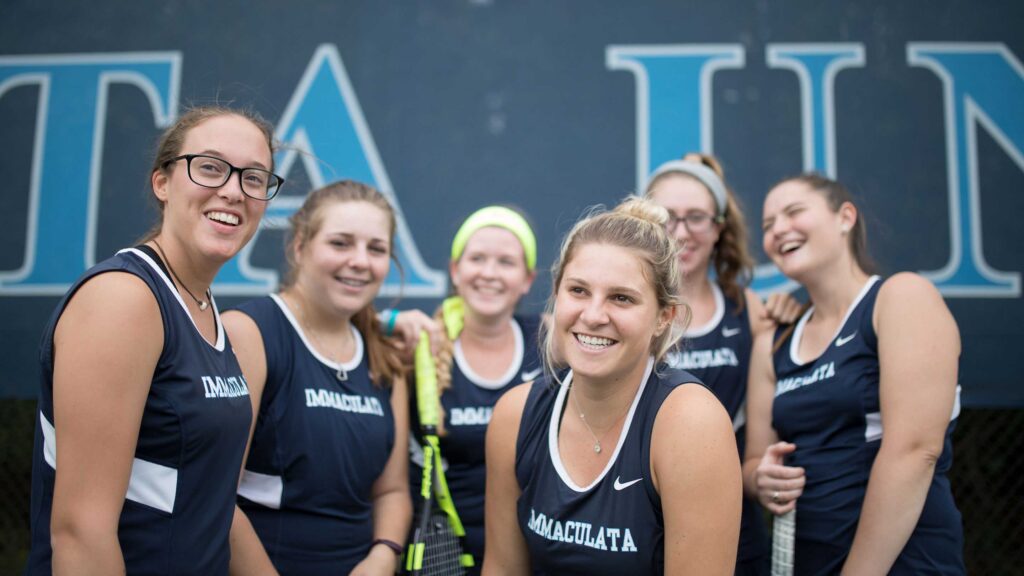 Most recently, in 2018, following suit with the women’s athletic offerings, Immaculata announced the addition of men’s swimming and volleyball teams. Ultimately, the additions of athletic programs over the years can be summarized by a quote from Barbara Lettiere ’72, current president of the University. “They [the athletic programs] will be a great addition to our already comprehensive athletic program and will provide more options for our students who want to play competitive Division III sports.”
Most recently, in 2018, following suit with the women’s athletic offerings, Immaculata announced the addition of men’s swimming and volleyball teams. Ultimately, the additions of athletic programs over the years can be summarized by a quote from Barbara Lettiere ’72, current president of the University. “They [the athletic programs] will be a great addition to our already comprehensive athletic program and will provide more options for our students who want to play competitive Division III sports.”
Building our athletic programs
As the sports programs grew, so too, did the facilities. In early 1999 before the turn of the new millennium, the basketball and volleyball teams enjoyed a completely renovated gym with new sound system, scoreboards, bleachers and refinished gym floors.
Other facility improvements made around this same time included changes to the tennis courts and amenities, as well as bleachers and scoreboards for the field hockey, soccer and lacrosse fields.
Exciting news came in the fall of 2006 when the main outdoor turf facilities were dedicated and named the Draper Walsh Stadium in honor of Mimi Draper Walsh ’63, a trustee and benefactor of the University. This state-of-the-art facility was in part provided through the generosity of the Walsh family, and still remains the focal point of the outdoor athletic facilities.
Soon thereafter, the Mighty Mac Training Facility was constructed in the fall of 2009 and housed batting cages for the softball and baseball teams. Housing a fully turfed floor, 14’ ceilings, and retractable batting cage nets allowed for the facility to be shared by multiple other sports including field hockey, soccer, lacrosse, and track & field for agility drills and other training exercises.
The momentum continued with the new state-of-the-art baseball stadium in late spring 2011. Its nearly 700-seat grandstand overlooks a beautiful grass playing field and is guarded by a major league-style backstop netting. Additionally the extra-large recessed dugouts allow for a clean line of sight from any seat in the stadium.
IU’s mascot, Mac, welcomed the Philly Phanatic to help celebrate the dedication of the new baseball stadium. The baseball stadium is a popular destination for fans, and is consistently compared to that of a minor league stadium.
With the intention of offering men’s and women’s swimming, Immaculata’s pool in Alumnae Hall received a total facelift in 2016. New tile flooring as well as other cosmetic fixes to the structure of the pool were made. Most importantly, electronic lap timers were added so that swim meets could be held at Immaculata.
Where we are today
In September, IU welcomed the latest addition to the athletic facilities, an eight-lane athletic track surrounding the Draper Walsh Stadium.
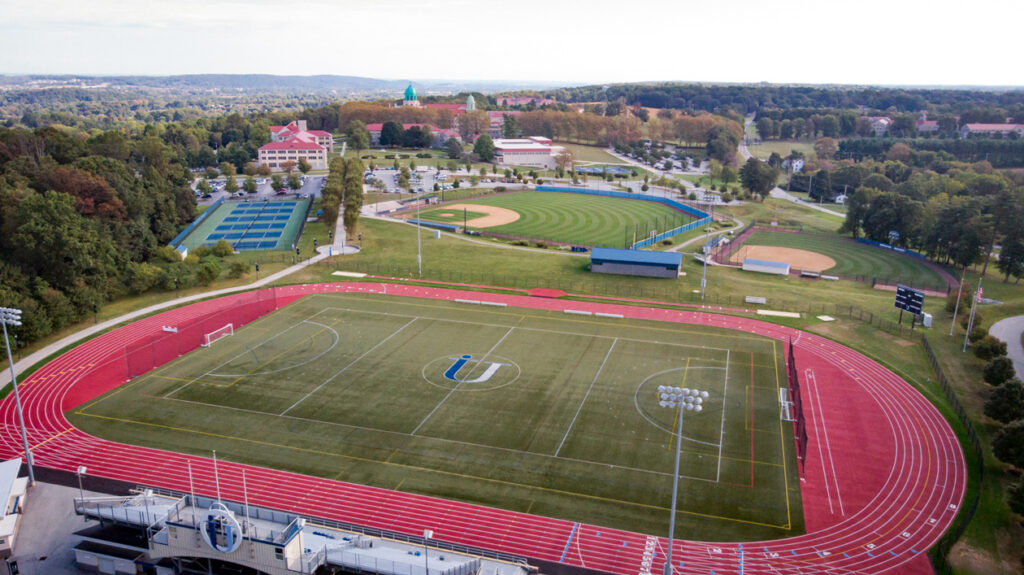 It is truly incredible to see how University athletics has grown on a program level and on a facilities level. The population of student athletes that are being served today would not have what they currently have if it were not for the hard work and dedication from individuals who were dedicated to growing Immaculata’s athletic programs.
It is truly incredible to see how University athletics has grown on a program level and on a facilities level. The population of student athletes that are being served today would not have what they currently have if it were not for the hard work and dedication from individuals who were dedicated to growing Immaculata’s athletic programs.
Today, both male and female Immaculata students can enjoy and choose from potentially participating in 24 different NCAA Division III athletic teams, and compete in a competitive Atlantic East Conference. Immaculata students challenge themselves by competing with other colleges and universities such as Cabrini University, Gwynedd Mercy University, Neumann University, Marymount University, Marywood University and Wesley College.
Recently, Immaculata has taken home divisional championships in men’s golf, softball, and women’s tennis, just to name a few. The different teams have had numerous playoff runs throughout recent history, and have been awarded a great number of academic accolades for maintaining top-of-the-conference grade point averages.
Over the course of 100 years, changes to athletic programs have given the university another avenue to grow and expand into the university we see today. Ultimately, athletics at Immaculata have helped shape its students into well-rounded individuals to move forward into the work force and be successful in career paths, leading teams of their own. Although the sports offerings and student populations within the university may be different from when it was founded, the pride of the Mighty Macs will never change.